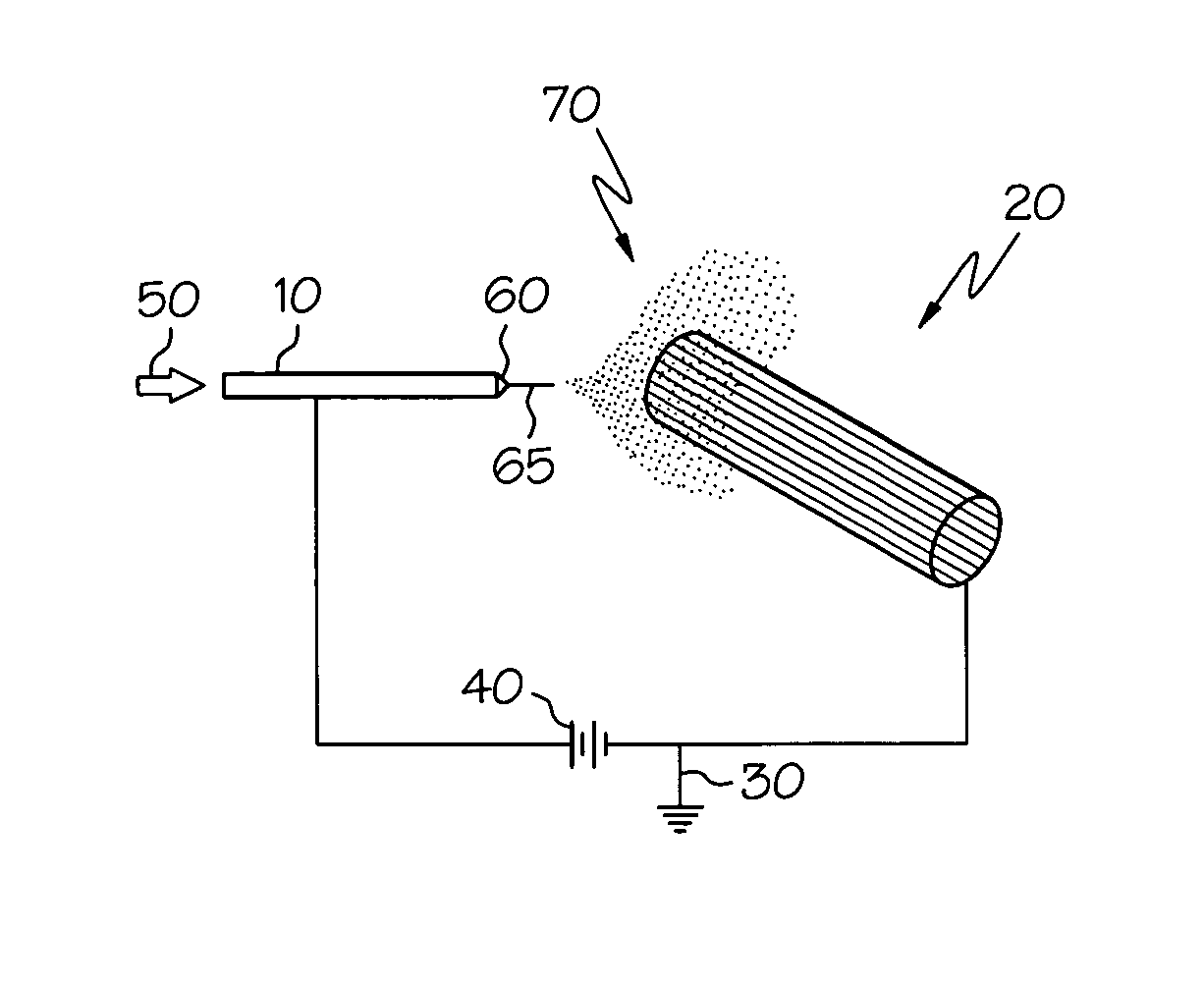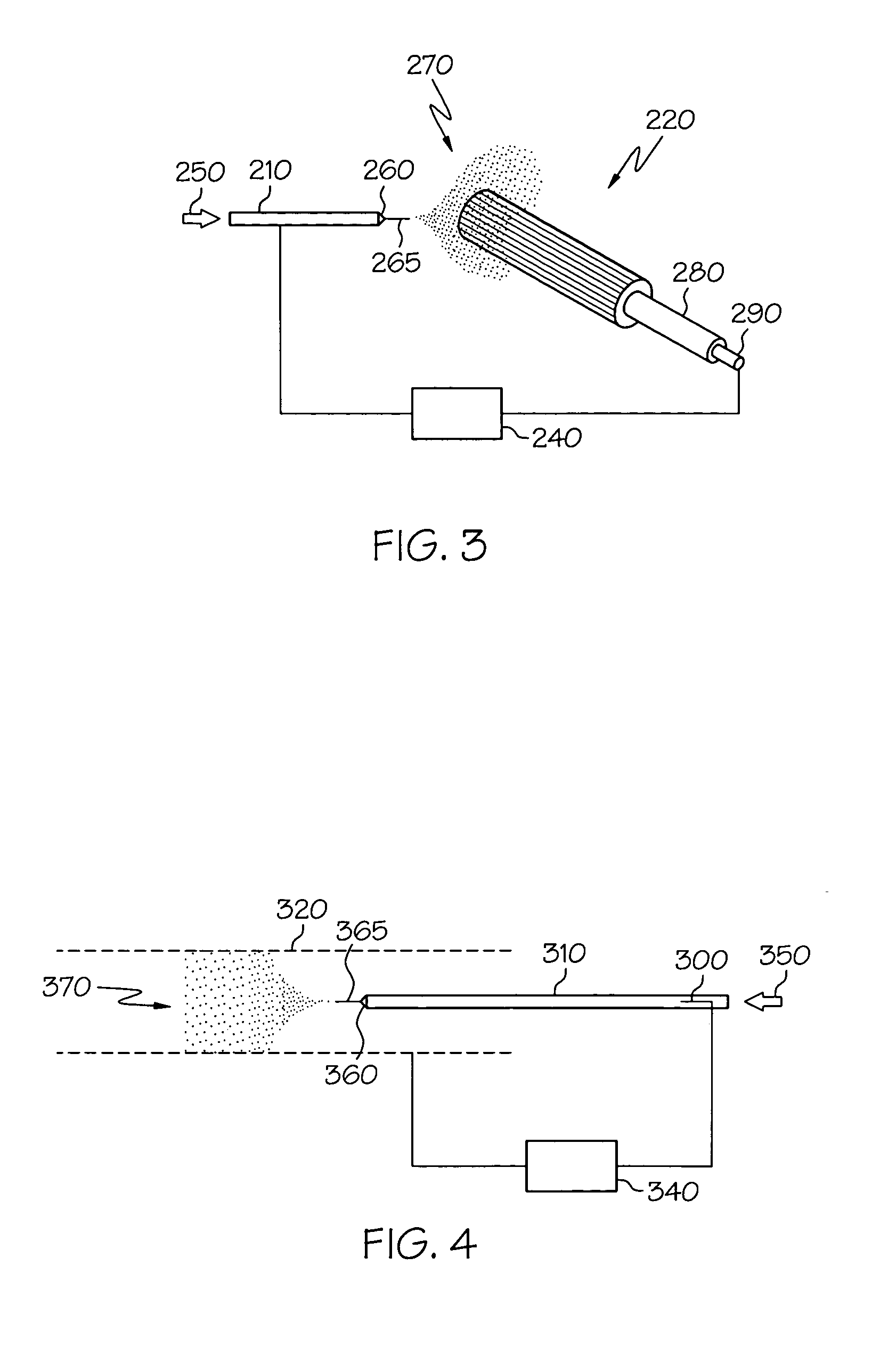Electric field spraying of surgically implantable components
a technology of surgical implants and spray coating, applied in the direction of prosthesis, packaging goods, foodstuffs, etc., can solve the problems of thrombosis or restnosis, interfere with the mechanical performance of the stent, and the pneumatic spray coating method is somewhat inefficien
- Summary
- Abstract
- Description
- Claims
- Application Information
AI Technical Summary
Benefits of technology
Problems solved by technology
Method used
Image
Examples
Embodiment Construction
[0024] Significant improvements to the process of stent (medical component) coating can be realized by delivering the coating material via electric field spraying, specifically electrohydrodynamic (“EHD”) droplet generation, whereby the formulation is delivered to a spray site where it is exposed to an electric field and forms a so-called cone-jet configuration to produce highly-charged, micron-sized droplets having nearly uniform size. The term “EHD spray” as used herein refers to a freely divided spray of liquid droplets generated by applying an electric field to a liquid at a spray head or spray edge. In EHD spray technology, the potential of the electric field is sufficiently high to overcome the surface tension of the liquid. The cone shape of the liquid at a spray site results from the electric field and surface tension forces balancing each other. The so-called Taylor cone was mathematically described by Geoffrey Taylor; hence, the phenomenon bears his name. At the apex of th...
PUM
| Property | Measurement | Unit |
|---|---|---|
| diameter | aaaaa | aaaaa |
| diameter | aaaaa | aaaaa |
| diameter | aaaaa | aaaaa |
Abstract
Description
Claims
Application Information
 Login to View More
Login to View More - R&D
- Intellectual Property
- Life Sciences
- Materials
- Tech Scout
- Unparalleled Data Quality
- Higher Quality Content
- 60% Fewer Hallucinations
Browse by: Latest US Patents, China's latest patents, Technical Efficacy Thesaurus, Application Domain, Technology Topic, Popular Technical Reports.
© 2025 PatSnap. All rights reserved.Legal|Privacy policy|Modern Slavery Act Transparency Statement|Sitemap|About US| Contact US: help@patsnap.com



